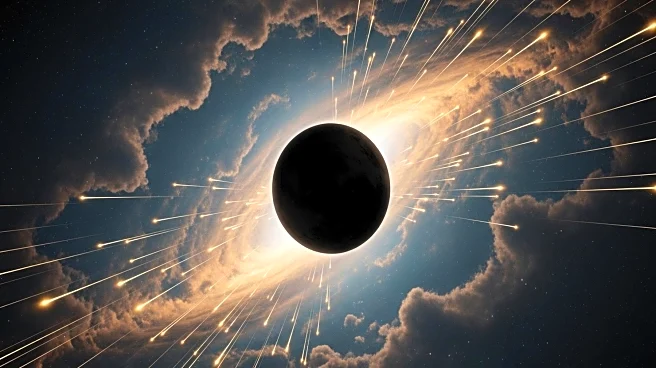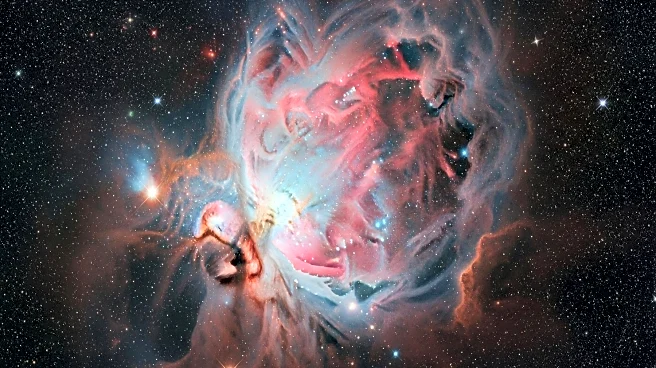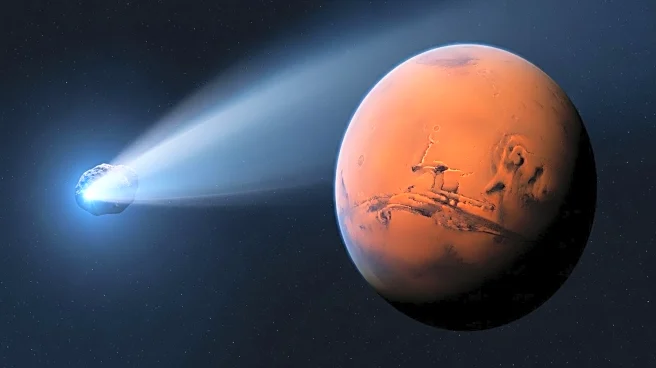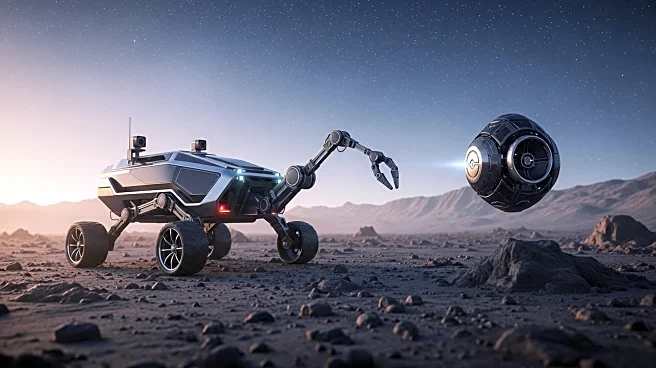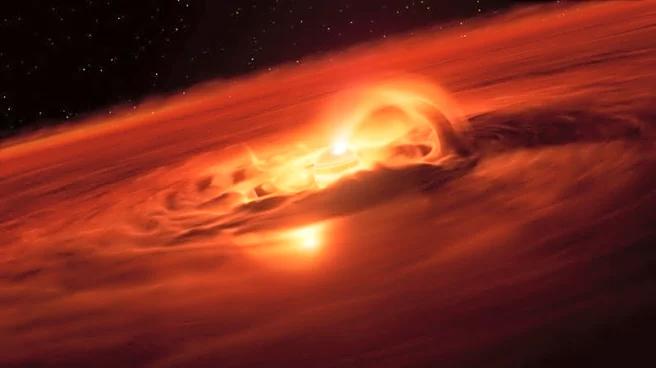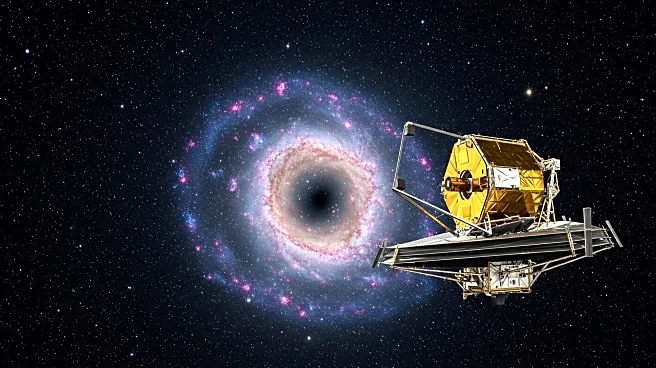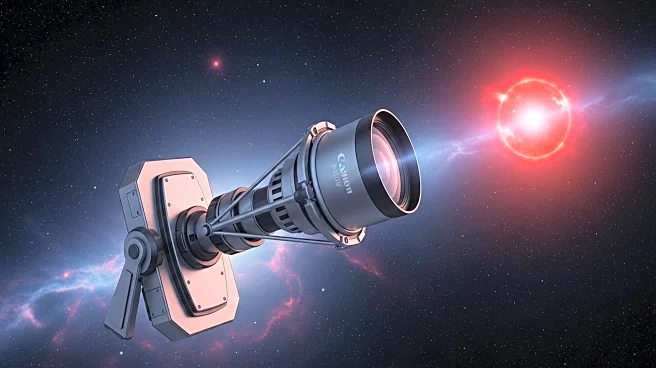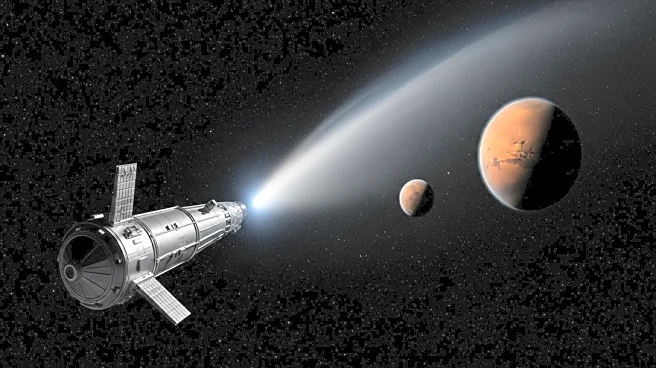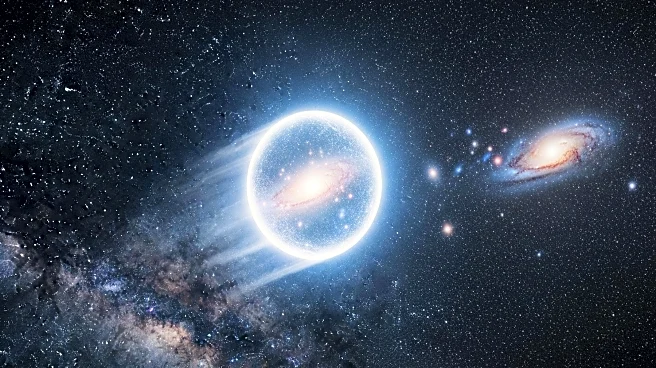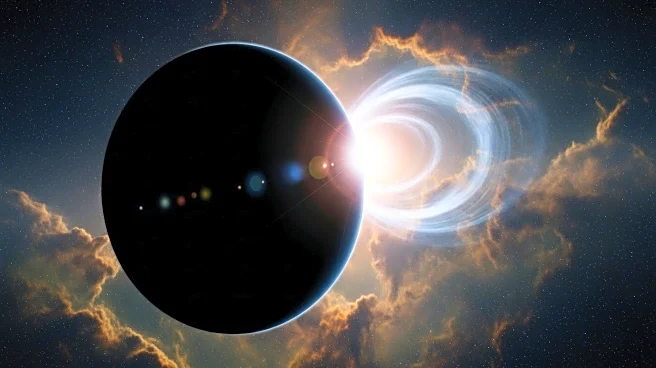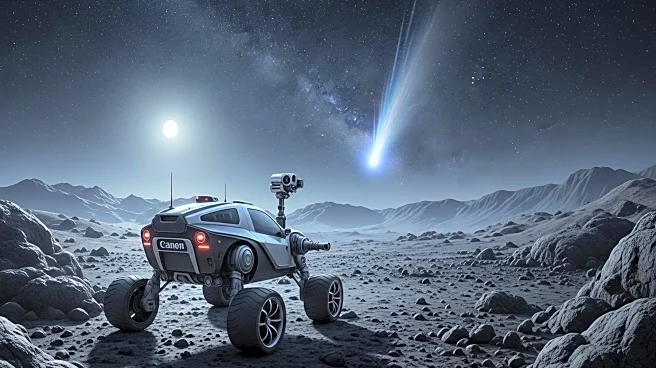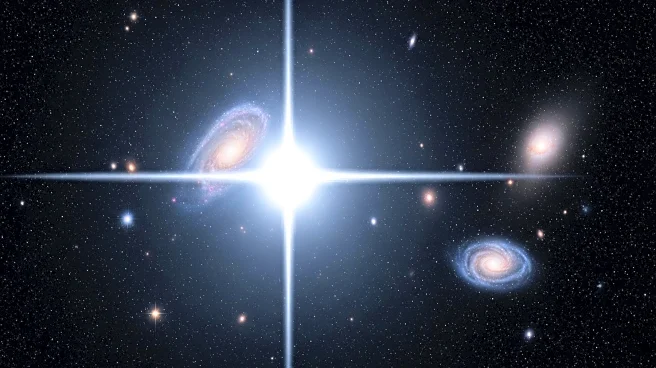What is the story about?
What's Happening?
Astronomers have discovered a rogue planet, Cha 1107-7626, in the Chameleon constellation, accreting material at an unprecedented rate. This free-floating world, with a mass 5 to 10 times that of Jupiter, is accumulating 6 billion metric tons of material per second, suggesting it is forming more like a star. The object has its own accretion disk, a feature typically seen around young stars, and is experiencing an accretion burst, a phenomenon that alters the chemistry of its surroundings. The discovery was made using the James Webb Space Telescope and the Very Large Telescope in Chile.
Why It's Important?
The observation of Cha 1107-7626 provides valuable insights into the formation processes of planetary-mass objects and their similarities to stars. Understanding these accretion bursts can reveal how such objects influence their environment and contribute to the broader understanding of star and planet formation. The study challenges the distinction between planets and stars, offering a unique opportunity to explore the dynamics of rogue worlds and their role in the universe. This research could lead to advancements in astrophysics and the study of celestial bodies.
What's Next?
The team plans to continue monitoring Cha 1107-7626 to understand the frequency and triggers of accretion bursts. Future observations will focus on the chemistry of the object's disk and atmosphere, utilizing the capabilities of the James Webb Space Telescope and other ground-based facilities. The ongoing research aims to uncover the nature and origin of rogue worlds, contributing to the understanding of planetary and stellar formation processes.
Beyond the Headlines
The discovery of Cha 1107-7626 highlights the blurred line between planets and stars, challenging traditional classifications and prompting a reevaluation of celestial formation theories. The study underscores the importance of advanced observational technologies in uncovering the complexities of the universe, paving the way for new discoveries and scientific breakthroughs.
AI Generated Content
Do you find this article useful?
